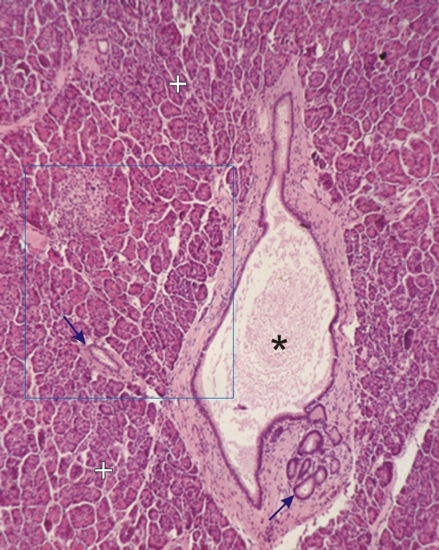|
||
| 12. Digestive System | ||
| 1 2 3 4 5 6 7 8 9 10 11 12 13 14 15 16 17 18 19 20 21 22 23 24 25 | ||
| 26 27 28 29 30 31 32 33 34 35 36 37 38 39 40 41 42 43 44 45 46 47 48 49 50 | ||
| 51 52 53 54 55 56 57 58 59 60 61 62 63 64 65 66 67 68 69 70 71 72 73 74 75 | ||
| 76 77 78 79 80 81 82 83 84 85 86 |
| |||
 |
The pancreas is a large gland measuring from 20 to 25 cm and weighing from 100 to 150 grams and is located in the abdominal cavity behind the stomach in the curvature of the duodenum. This organ has exocrine and endocrine components.
The exocrine compartment is composed of glandular acini and associated ducts. One or two large pancreatic ducts open into the duodenum. The endocrine compartment is composed of small groups of cells or islets (of Langerhans) distributed throughout the pancreas. These islets form only from one to two percent of the total mass of the pancreas. Composed of several cell types, these islet cells secrete various hormones directly into the circulation, particularly insulin and glucagon, which regulate the metabolism of carbohydrates. This field shows a fair-sized pancreatic duct (*) with some branches (arrows) surrounded by exocrine glandular acini (+). The framed area is shown at a higher magnification in Figure 12.52. Stain: H–E
|
||